The Center Column Reference Bible Red Letter Edition from Church Bible Publishers is a reproduction of the Cambridge Turquoise with wider margins and red-letter going all the way through Revelation. It includes family pages, Translators to the Reader, concordance, and maps with an index.
It’s available in 4 cover options including ironed calfskin in one piece black, brown, or red, and black lambskin. I’m reviewing the one piece ironed calfskin in black.
___________________________
Purchase from CBP
___________________________
Video Review
Cover and Binding
The cover is ironed calfskin with perimeter stitching and an edge-lined synthetic liner. The cover is smooth but you can still see the grain. I’m a fan of pronounced grain and texture, but this does look good. It’s almost too soft though. If I set something on top of it there will be an impression in the leather. It goes away after a while.
The front of the cover has no text while the spine has HOLY BIBLE, Authorized King James, and CBP printed in gold. It also includes 5 raised spine ribs.
The text-block is Smyth sewn. It has no trouble staying open in Genesis 1 out of the box. It didn’t have to break in before I could read or preach from the first page of Genesis.
It includes two black ribbons that are more than long enough to pull to the corner to open the Bible, and gold and black head/tail bands. The overall size is 9.8 x 6.8 x 1.5″. This size creates a common size with other editions, allowing CBP to use the same covers as their other Bibles. This means they can produce this edition in multiple colors. It weighs 2lbs, 12.7oz. I love this size for carrying and reading.
Paper
The paper is similar to the 22# Domtar TitaniumJET used in the Hand Sized edition, which is somewhere in the mid 30’s in gsm. It’s more opaque than the paper they use in their 120 wide margin Cameo, but the texture feels the same. It’s white in color and it’s extremely opaque, but it’s not as opaque as the hand-sized edition. I think this is due to the larger edition having more ink per character. Any differences I’m detecting is probably due to the paper being from a different lot.
It does have some minimal glare under direct lighting, which I only notice while sitting at my desk or under a reading light. In normal or natural light there is no glare at all. The texture of the paper makes it easy to separate the pages easily with one hand. The page edges are gold gilt.
It has 22 pages in the back that are labeled NOTES. It also has several thick end-sheets that can be used for notes. I’m glad these pages are included. Note paper is always great to have and the thick end-sheets adds structure.
Typography
This is the vintage Turquoise double column verse-by-verse layout design with center column references. The header includes the book name and chapter numbers in the outer margin and a page-summary for each column in the inner column. The footer shows the page number in the center. Every chapter is numbered (Rev 22 is chapter number 1189 in case you were wondering).
The font is a bold 10 point with an 11 point leading (the space between the lines). This font actually looks larger than it is because of the design. The leading gives it a lot of extra white space around the text, greatly improving readability. This is a red-letter edition. The black is bold. The red is on the darker side of red-letter. I like this shade of red. The darkness of the print is mostly consistent throughout. I does have a slight amount of variation that goes from dark to darker, but I only noticed because I was looking for it. This amount of variation doesn’t bother me. I can read it easily in dim lighting.
The more difficult names have self-pronouncing markings. A guide in the front shows how to pronounce them. I’m not a huge fan of self-pronouncing text, but this one isn’t overdone. It doesn’t include common names like Jesus, David, Israel, Jerusalem, or Judah. It includes italics for supplied words. Paragraphs up to Acts 20 are marked with pilcrows. The text includes footnote and reference keys. It uses numbers for footnotes and letters for references. They’re large, but they’re not bold. I can ignore them easily enough when reading.
It has 32 characters per line with 5-7 words per line. This setting was typeset by hand, so there are a few places where the words can be a little too close, but I find it easy enough to read. Even though it isn’t on purpose, the text is mostly line-matched.
It has a .8″ margin on the outside, and about a .5″ on the inside, top, and bottom. This brings the text out of the gutter and provides a little bit of space for notes- especially in the outer margin.
References and Footnotes
Cross-references and footnotes are located next to the verses they correspond to. I like this because it makes them easy to find. It also has a little bit of space between many of the references for small notes. They include the key with the reference or note.
It has around 44,000 cross references. This is good for basic study and sermon prep. Here are some example references to help you compare:
- Genesis 1:1 – Ps 136:5; Jn 1:1-3; Col 1:16,17; He 1:8-10; 11:3; Jer 4:23
- Deuteronomy 6:4 – Mk 12:29; Isa 42:8; Jn 17:3; 1 Co 8:4,6
- Isaiah 9:6 – Lk 2:11; Isa 7:14; Mt 28:18; Judg 13:18; Eph 2:14
- Matthew 17:20 – Mt 21:21; Mk 11:23; Mt 13:31; Mt 17:9
- Mark 11:23 – N/A
- Mark 12:29 – Deu 6:4,5
- John 1:1 – Ge 1:1; Jn 17:5; Col 1:17; 1 Jn 1:1; Jn 1:14; Rev 19:13; 1 Jn 1:2; Phil 2:6
- John 2:19 – Mt 26:61; 27:40; Mk 14:58; Jn 10:18
- Acts 2:38 – Lk 24:47; Acts 3:19; 20:21; 8:15,16; 22:16; Mt 26:28; Acts 10:45
- 1 John 1:1 – Jn 1:1; 1 Jn 2:13,14; Rev 1:2; Jn 1:14; Lk 24:49; Jn 1:4
The footnotes are those provided by the translators. They include alternate renderings and explanations from the Hebrew and Greek. I find them helpful for study and for getting insights on the original languages.
Family Records
In the front there are several family records pages printed on thick non-glossy paper. They include a presentation page, the family record of the husband and wife, children, marriages, grandchildren, and deaths. They include blue and gold highlights with the deaths page having black and gold highlights.
Concordance
The concordance is 126 pages with 2 columns per page. The references are in paragraph format, which isn’t my favorite layout for a concordance. It does have a lot of entries though. It’s a good concordance for study and sermon prep. It includes the parts of speech with separate entries for each one.
Here are a few examples with their number of entries to help you compare:
- Christ – 36
- Christian – 3
- Faith – 54
- Faithful – 27
- Faithfully – 3
- Faithfulness – 6
- Faithless – 4
- God – 76
- Goddess – 3
- Godhead – 3
- Godliness – 4
- Godly – 2
- God-ward – 3
- Praise (n) – 11
- Praise (v) – 14
- Pray – 45
- Prayer – 22
MAPS
It has 15 older Cambridge maps printed in bright colors on thick non-glossy paper. They include cities, routes, Scripture references, distance, mountains, territorial expansions with dates, topography, kingdoms, battle sites, locations of events, addressees of Pauline epistles, etc. It also has an 8-page index, which makes finding locations much easier.
The annotations are bold and dark, which can make some of the small text difficult to read. They’re not as easy to read as their Cambridge versions, but they’re still nice maps.
Maps include:
- The Biblical World of the Patriarchs
- Palestine: Political Regions
- The Route of the Exodus
- The Twelve Tribes of Israel
- Kingdoms of Saul, David & Solomon
- The Divided Kingdom: Israel & Judah
- The Assyrian Empire
- The Babylonian Empire
- The Greek Empire
- Old Testament Jerusalem
- New Testament Jerusalem
- The Ministry of Jesus
- The Missionary Journeys of Paul
- The Spread of Christianity
- Modern Israel
Comparisons
Here’s a look at how the Handsize Center Column Reference Bible compares to its most prominent competition and the regular size edition from both Cambridge and CBP. We’ll compare the CBP handsize Turquoise, Cambridge Turquoise, CBP Turquoise, Longprimer, and Canterbury.
Original CBP Turquoise
The regular edition includes a dictionary and isn’t as wide as the red letter edition. The paper in the reglar edition seems to be a touch more opaque, but just barely.
Cambridge Turquoise
The Cambridge Turquoise is the Bible the CBP is a reprint of. Cambridge has re-released the Turquoise in higher-quality materials produced by Royal Jongbloed. It doesn’t include red letter in Revelation. It’s slightly thinner and lighter.
Longprimer
The Longprimer is a premium edition available in several sizes of paper from 28 to 38 gsm. The font is slightly smaller and doesn’t have as much space between the lines.
Canterbury
The calfskin Canterbury has a paste-down liner. It includes 36gsm paper with an ivory or cream color and a digital font.
CBP Hand Size Center Column Reference Bible
The CBP hand size edition is a Turquoise that’s reduced to a 9-point font. It’s black letter and makes a great combo if you want the Turquoise in two different sizes.
Final Thoughts on the CBP Center Column Reference Bible Red Letter Edition
The Church Bible Publisher’s Center Column Reference Bible Red Letter Edition is an easy Bible to recommend. The 10-point font is easy to read and the extra margin space is great for small notes. The references, translator’s footnotes, and concordance make it a good option for study and sermon prep. The paper did have a small amount of glare from the light above my pulpit but it wasn’t that bad. I had no issues turning the pages.
Anyone interested in a low-cost alternative to the Cambridge Turquoise would be interested in the Center Column Reference Bible Red Letter Edition from Church Bible Publishers.
___________________________
Purchase from CBP
___________________________
CBP provided this Bible in exchange for an honest review. I was not required to give a positive review, only an honest one. All opinions are my own.













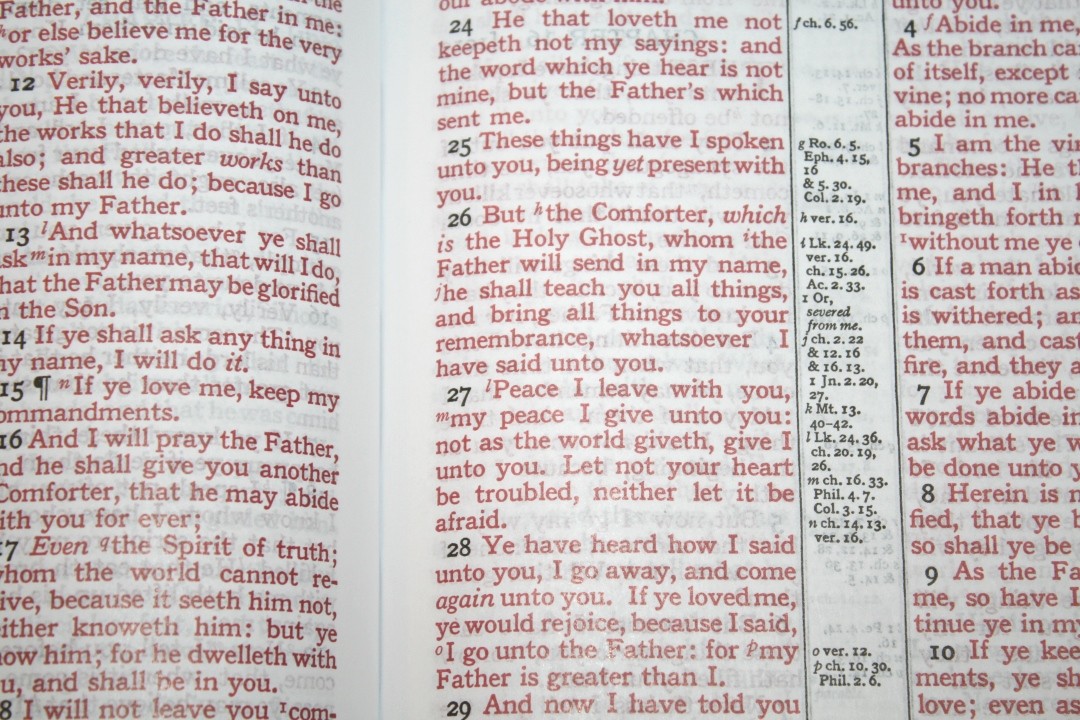

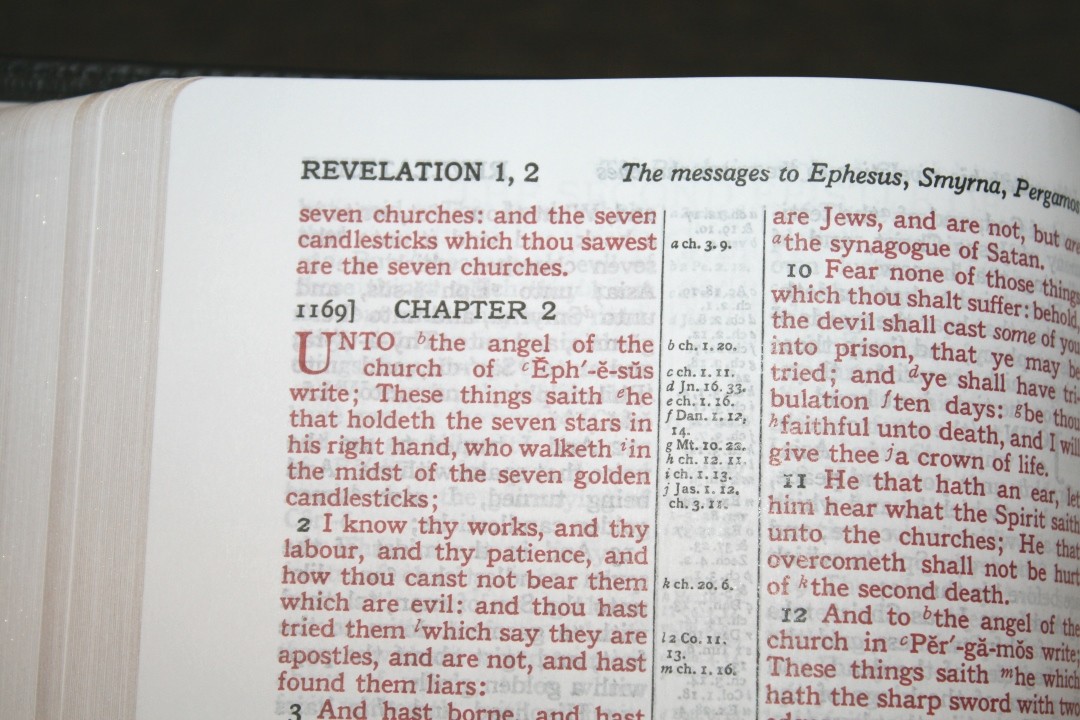



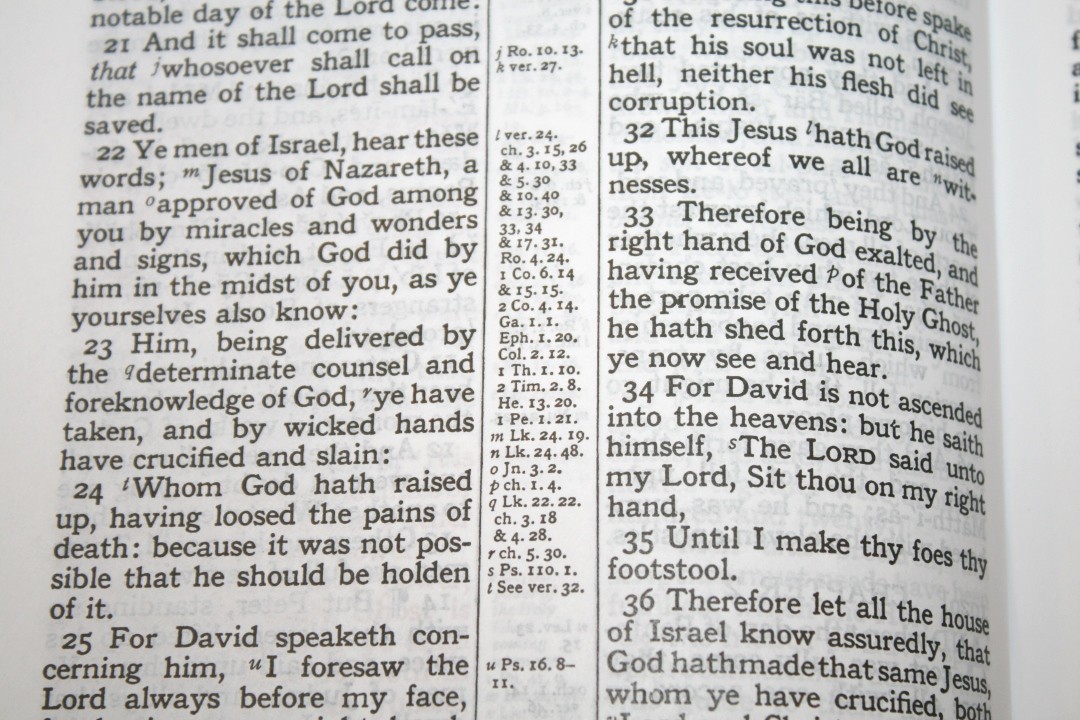
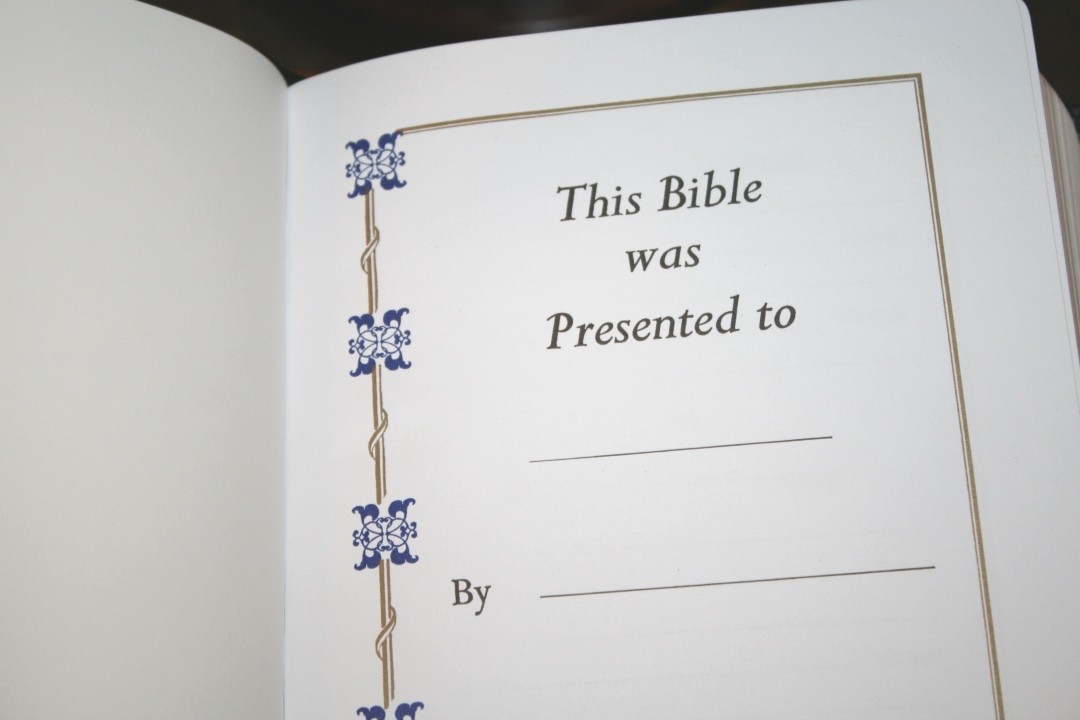

























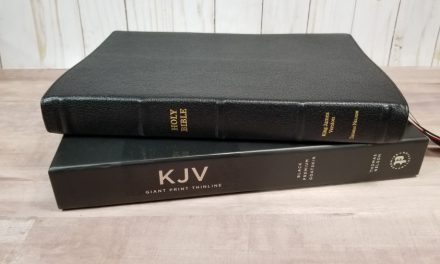


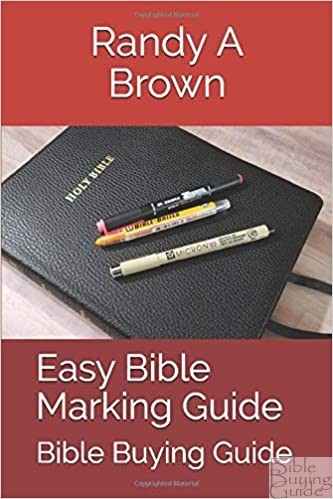




Recent Comments